Does Lack Of Sleep Cause Dehydration?
 Do you burn the candle at both ends and wind up feeling fatigued or have a headache in the morning? Most people would blame that on lack of sleep, but the answer might be a bit more complicated. Maybe lacking sleep isn’t the exact problem, but dehydration is. What causes the dehydration? According to research published in the November 5, 2018, journal, Sleep, these symptoms occur because of dehydration, but the dehydration may occur because of the lack of sleep.
Do you burn the candle at both ends and wind up feeling fatigued or have a headache in the morning? Most people would blame that on lack of sleep, but the answer might be a bit more complicated. Maybe lacking sleep isn’t the exact problem, but dehydration is. What causes the dehydration? According to research published in the November 5, 2018, journal, Sleep, these symptoms occur because of dehydration, but the dehydration may occur because of the lack of sleep.
The study followed the hydration of almost 20,000 Chinese and American Adults.
It didn’t matter whether you were from the US or China, sleeping fewer than six hours on a regular basis increased your risk of dehydration up to 59% when compared to people who slept from seven to eight hours normally. While studies have shown that lack of sleep not only impairs your judgement and focus, but when done consistently, can increase the risk of type 2 diabetes, high blood pressure and obesity. Newer studies show it can even lead to kidney disease and even early death.
New studies show it may be because of a hormone created at night as part of the circadian rhythm.
When scientists discovered the link between lack of sleep and dehydration, they had to look further. The study was observational, but it linked the dehydration to the creation of a hormone called vasopressin. The body creates vasopressin, which is a hormone that has antidiuretic qualities. It helps maintain the body’s water balance both during the day and night. Vasopressin is released more quickly deeper into the sleep cycle. Going to bed and therefore getting up before the most hormone is released can disrupt the body’s hydration.
What to do if you’re getting less than eight hours of sleep a night.
Getting adequate sleep should be your first line of defense. Lack of sleep affects so many areas of your health that it’s extremely important. However, sometimes getting enough sleep isn’t possible. For those times when you’re tired, feeling groggy or out of sorts, don’t reach for coffee. Instead, reach for a bottle of water and drink water liberally throughout the day.
- The kidneys play a vital role in hydration due to the hormone vasopressin secreted by the pituitary gland. Drinking more water actually improves kidneys health.
- The studies showed that people who regularly slept 6 hours or less had urine that was more concentrated than those who slept at least 8 hours a night. However, sleeping 9 hours made no significant difference.
- The quality of your sleep makes a difference. Quality sleep is more than just getting to bed on time. It’s going to sleep and sleeping through the night to let the sleep cycle complete.
- You can get better quality sleep by creating a sleep schedule and sticking with it, refrain from eating too much at bedtime, but don’t go to bed hungry and make your area conducive to sleep, dark, slightly cool and quiet.
For more information, contact us today at Next Level Fitness


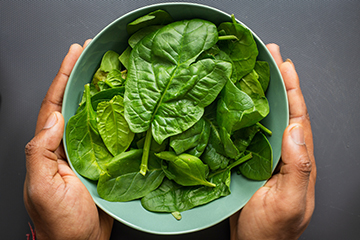
 There are a lot of foods that are high in iron, such as shellfish, liver and other organ meats, beef, turkey and fish. That’s normally where many people get iron in their diet. What about a vegetarian? What foods should they eat to get their daily supply of iron? Iron is important for the body. It is necessary in the blood to carry oxygen throughout the body. A deficiency leads to anemia and fatigue. Most at risk are menstruating women and people with certain conditions. There are some rich sources of iron in the plant world, however.
There are a lot of foods that are high in iron, such as shellfish, liver and other organ meats, beef, turkey and fish. That’s normally where many people get iron in their diet. What about a vegetarian? What foods should they eat to get their daily supply of iron? Iron is important for the body. It is necessary in the blood to carry oxygen throughout the body. A deficiency leads to anemia and fatigue. Most at risk are menstruating women and people with certain conditions. There are some rich sources of iron in the plant world, however. Do you really think that healthy food has to taste bland and boring? You’ll be surprised at how spicing up your meals not only makes it taste better, but also can benefit your health. Holy Basil, for instance, is used in Asian cooking, but is more often used for its health benefits. It helps you feel more relaxed and reduces the hormone of stress, cortisol. Sage is another herb that helps the body. In fact, it’s genus name, salvia, means to heal in Latin. The chemicals sage contains, such as luteolin, quercetin and rosmarinic, also improve memory and alertness.
Do you really think that healthy food has to taste bland and boring? You’ll be surprised at how spicing up your meals not only makes it taste better, but also can benefit your health. Holy Basil, for instance, is used in Asian cooking, but is more often used for its health benefits. It helps you feel more relaxed and reduces the hormone of stress, cortisol. Sage is another herb that helps the body. In fact, it’s genus name, salvia, means to heal in Latin. The chemicals sage contains, such as luteolin, quercetin and rosmarinic, also improve memory and alertness.
 In Irvine, CA, there are many boutiques and health stores where you can purchase both raw and processed honey. Don’t be fooled by the grocery store honey that is often watered down and degraded with fructose additives, making it nothing but honey sugar syrup with none of the health benefits of honey. There is medical-grade honey, food-grade, raw honey, organic honey and pasteurized honey. To get the benefits, avoid the pasteurized or processed honey. The heating and treating kills the good bacteria and eliminates many of the health benefits. Buy from local beekeepers if possible.
In Irvine, CA, there are many boutiques and health stores where you can purchase both raw and processed honey. Don’t be fooled by the grocery store honey that is often watered down and degraded with fructose additives, making it nothing but honey sugar syrup with none of the health benefits of honey. There is medical-grade honey, food-grade, raw honey, organic honey and pasteurized honey. To get the benefits, avoid the pasteurized or processed honey. The heating and treating kills the good bacteria and eliminates many of the health benefits. Buy from local beekeepers if possible.
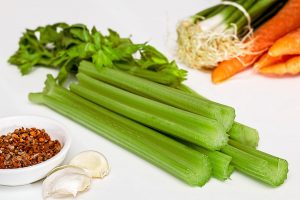 Are you searching for food that fills you up, but that has almost ZERO calories? Lots of people in Irvine, CA are doing the same thing. Finding foods with low or no calories isn’t as hard as you think. You start with food that normally is lower calorie, contains fiber and burns more calories to digest as it contains. These are called negative-calorie foods, which is a hot topic today.
Are you searching for food that fills you up, but that has almost ZERO calories? Lots of people in Irvine, CA are doing the same thing. Finding foods with low or no calories isn’t as hard as you think. You start with food that normally is lower calorie, contains fiber and burns more calories to digest as it contains. These are called negative-calorie foods, which is a hot topic today.
 Most people think of sex hormones when they see articles on how to balance your hormones. However, sex hormones aren’t the only hormones that get out of balance and affect your health and well-being. While perimenopause and menopause can definitely cause a hormone imbalance, there are other hormones that also do. Hormones regulate a lot of processes, which include the sleep cycle, metabolism, appetite, mood, stress levels and even body temperature. Even slight changes in insulin, androgens, thyroxine, cortisol or estrogen can trigger a problem. You can use herbs to help them get back into line.
Most people think of sex hormones when they see articles on how to balance your hormones. However, sex hormones aren’t the only hormones that get out of balance and affect your health and well-being. While perimenopause and menopause can definitely cause a hormone imbalance, there are other hormones that also do. Hormones regulate a lot of processes, which include the sleep cycle, metabolism, appetite, mood, stress levels and even body temperature. Even slight changes in insulin, androgens, thyroxine, cortisol or estrogen can trigger a problem. You can use herbs to help them get back into line.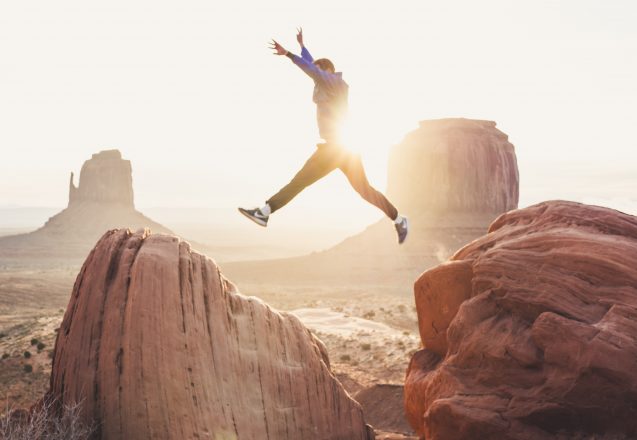
 Everyone’s been there at one time or another. It’s just three to four hours since you ate lunch and you’re ready to melt into a puddle. Your energy level is down and you feel too worn out to do anything. What’s the first thing you do? It’s often start searching for something sweet. Don’t do that. While sugary products do give you energy, that energy dips as quickly as it came. Instead, opt for foods that give you more energy that lasts for hours. Make that snack a healthier option that also provides nutrients for your body to function properly.
Everyone’s been there at one time or another. It’s just three to four hours since you ate lunch and you’re ready to melt into a puddle. Your energy level is down and you feel too worn out to do anything. What’s the first thing you do? It’s often start searching for something sweet. Don’t do that. While sugary products do give you energy, that energy dips as quickly as it came. Instead, opt for foods that give you more energy that lasts for hours. Make that snack a healthier option that also provides nutrients for your body to function properly.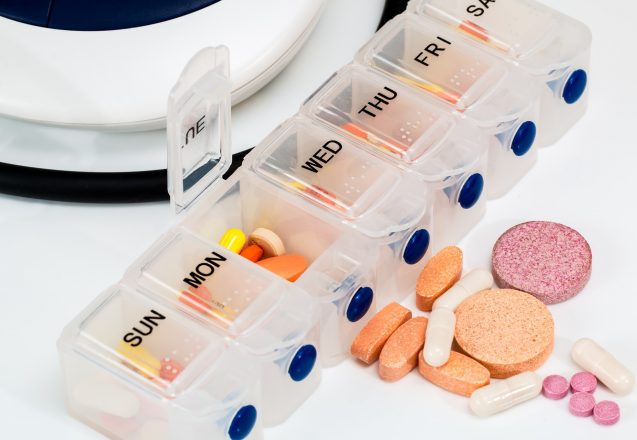
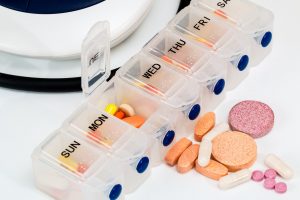 When you think of supplements, does your mind immediately think of that multivitamin you take in the morning or do you think of the protein supplement you’re taking to boost your muscle development. One of the biggest dangers of taking supplements is thinking they substitute for a healthy diet. They don’t. There are a lot of different types of supplements. Some are made from ordinary ingredients, like fruits and vegetables that are freeze-dried, ground and capsulized. Some are exotic herbs, which may not be as healthy as you think or protein supplements that may cause other problems.
When you think of supplements, does your mind immediately think of that multivitamin you take in the morning or do you think of the protein supplement you’re taking to boost your muscle development. One of the biggest dangers of taking supplements is thinking they substitute for a healthy diet. They don’t. There are a lot of different types of supplements. Some are made from ordinary ingredients, like fruits and vegetables that are freeze-dried, ground and capsulized. Some are exotic herbs, which may not be as healthy as you think or protein supplements that may cause other problems.
 If you’re like many people, you find yourself rushed in the morning, barely able to put toast in the toaster. Making a healthy breakfast may be important to help you lose weight, but when time is at a premium, something has to give. Overnight oats is a healthy breakfast option that doesn’t require cooking. You simply combine the oats, whether it’s rolled, steel cut or quick cook, into a container like a Mason jar, and add any type of milk, such as coconut, almond or regular. Put the lid on, shake and store it in the refrigerator. In the morning, they’ll be soft from absorbing the liquid, as though you cooked them.
If you’re like many people, you find yourself rushed in the morning, barely able to put toast in the toaster. Making a healthy breakfast may be important to help you lose weight, but when time is at a premium, something has to give. Overnight oats is a healthy breakfast option that doesn’t require cooking. You simply combine the oats, whether it’s rolled, steel cut or quick cook, into a container like a Mason jar, and add any type of milk, such as coconut, almond or regular. Put the lid on, shake and store it in the refrigerator. In the morning, they’ll be soft from absorbing the liquid, as though you cooked them.
 If you’re a regular at Next Level Fitness in Irvine, CA, you may already realize all the health benefits you get from exercise. If you just wanted to shed a few pounds and look better, you’ll also get the benefits that come from losing that extra weight. No matter what type of exercise you do, you’re burning extra calories and building more muscle strength. Losing weight may be one of the biggest benefits, since obesity is the leading cause of preventable deaths, even surpassing smoking. Exercise and weight loss can also help lower blood pressure, normalize blood sugar levels and improve the immune system.
If you’re a regular at Next Level Fitness in Irvine, CA, you may already realize all the health benefits you get from exercise. If you just wanted to shed a few pounds and look better, you’ll also get the benefits that come from losing that extra weight. No matter what type of exercise you do, you’re burning extra calories and building more muscle strength. Losing weight may be one of the biggest benefits, since obesity is the leading cause of preventable deaths, even surpassing smoking. Exercise and weight loss can also help lower blood pressure, normalize blood sugar levels and improve the immune system.